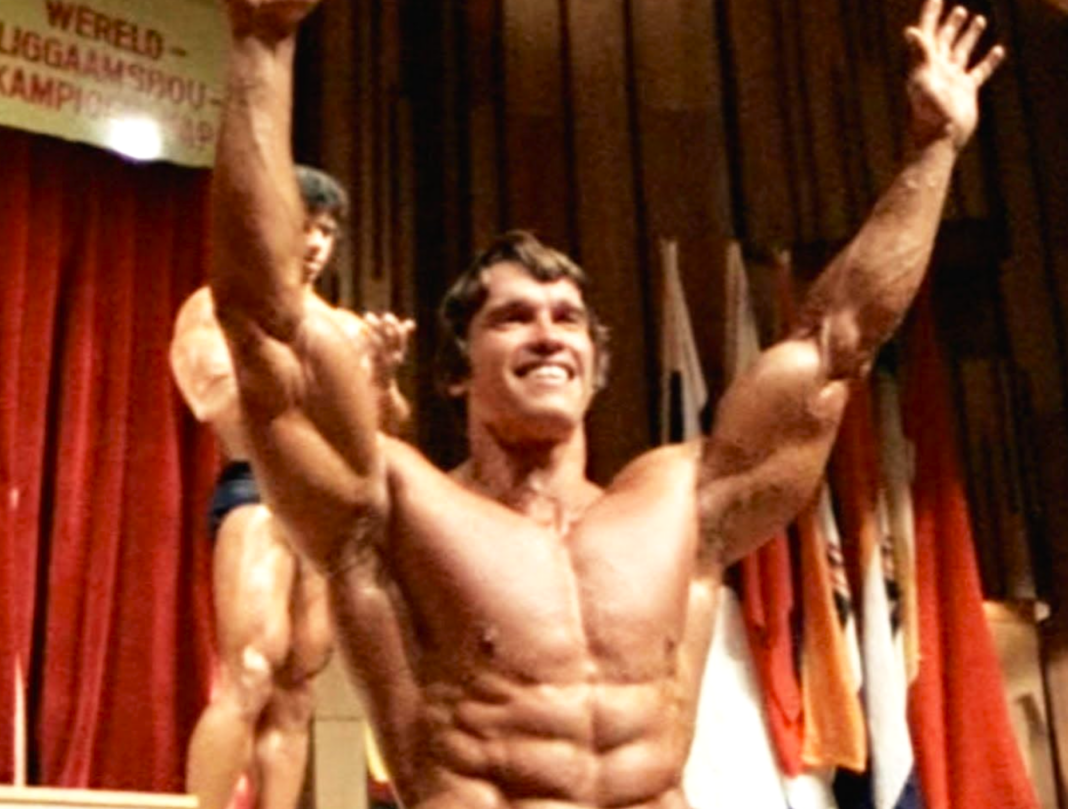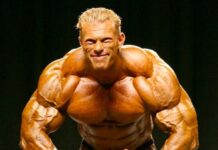Pumping Iron endures. It’s the movie that launched bodybuilding, Arnold Schwarzenegger, and a slang term for weight-training into the public consciousness. It’s the immensely quotable documentary that bodybuilders and bodybuilding fans have returned to again and again for nearly half a century. Focused on competitors in the 1975 Mr. Universe and Mr. Olympia—especially Arnold Schwarzenegger, Lou Ferrigno, Franco Columbu, and Mike Katz—the 1977 film was a critical success that became an essential document for generations of iron-pumpers. It remains a unique, close-up view of bodybuilding’s golden age.
Now learn the story behind the story. From genesis to legacy, the following 25 things about Pumping Iron are ones you probably didn’t know but should.
1. THE GENESIS
George Butler was introduced to competitive bodybuilding when Charles Gaines asked him to photograph the Mr. East Coast for an article that appeared in a 1972 issue of Sports Illustrated magazine.
2. THE BOOK
Photographer Butler and writer Gaines subsequently created the 1974 book Pumping Iron, which became a surprise bestseller.
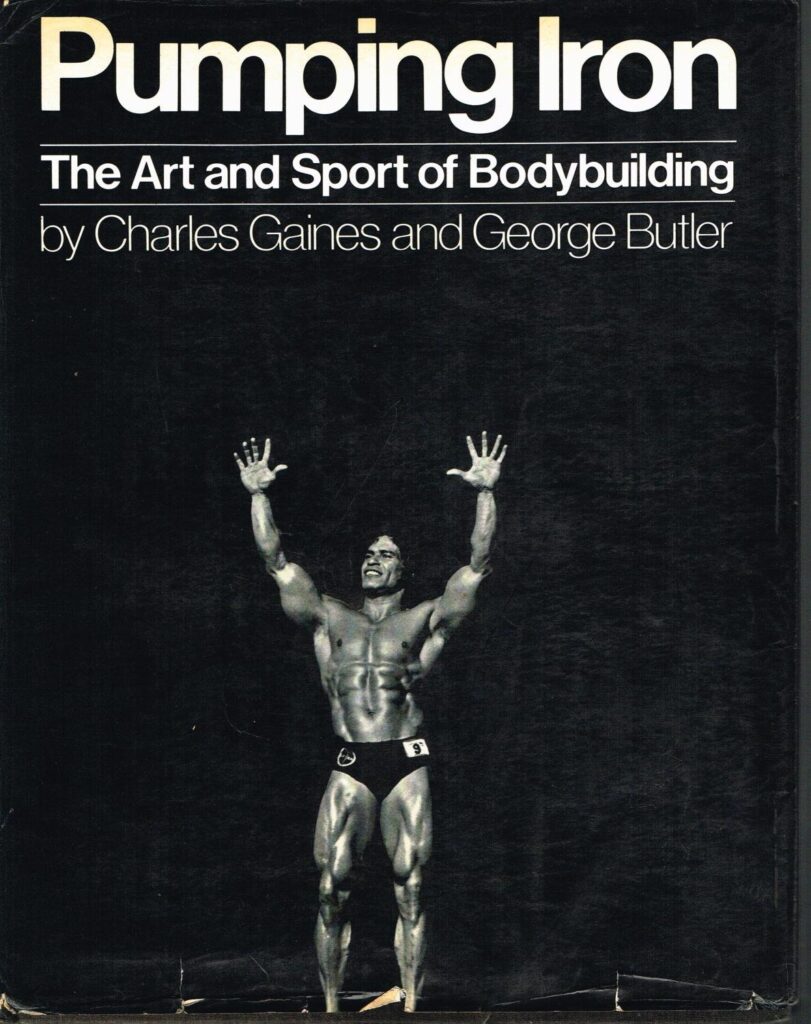
For the story of that book with excerpts and rare photos, check out: Pumping Iron: The Book
3. STAY HUNGRY
Charles Gaines co-wrote the bodybuilding themed-film Stay Hungry (based on his novel of the same name), which was shot just before Pumping Iron and released in 1976. Arnold Schwarzenegger’s Golden Globe Award-winning acting in Stay Hungry increased the focus on him and Pumping Iron in 1977.
4. THE FINANCING
George Butler asked approximately 3000 people to help finance his bodybuilding documentary. Almost all said no, even after he filmed 10 minutes of test footage of Arnold posing at a Massachusetts amusement park. Butler said: “What you’ve got to understand is that back in the early 70’s bodybuilding was the least glamorous sport in the world. The prevailing view was that it was purely homosexual, that bodybuilders were totally uncoordinated, and that when they grew older their muscles would turn to fat, and that they had no intelligence whatsoever. Charles Gaines said that it was like trying to promote midget wrestling. It was so tawdry. Everyone we knew was laughing at us.” Butler eventually raised $400,000, but not before going $30,000 in debt.
5. ARNOLD’S PAYDAY
Schwarzenegger had slimmed down to act in Stay Hungry, and, after winning five consecutive Mr. Olympias (1970-74), he was retiring from bodybuilding to focus on acting. When George Butler first approached him to compete in the 1975 Mr. Olympia and star in Pumping Iron, Arnold declined. Butler argued that the documentary would help Arnold’s nascent movie career. Arnold only said yes after Butler agreed to pay him $50,000 (one-eighth of Pumping Iron’s budget).
6. TWO DIRECTORS
Pumping Iron was co-directed by George Butler and Robert Fiore. This is cameraman Fiore’s only directing credit.
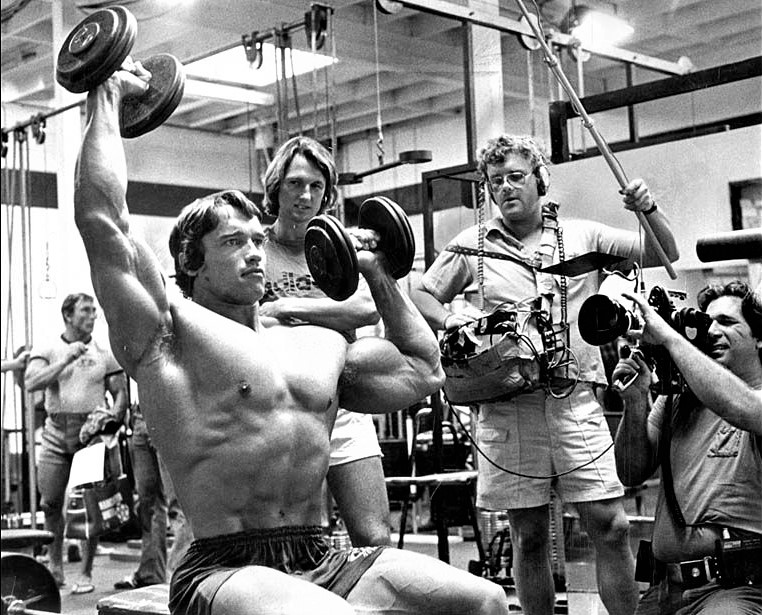
For an exclusive interview with the late George Butler about Pumping Iron, go here.
7. FILMING LOCATIONS
Filming took place over 14 weeks in locations far and wide: Los Angeles, San Francisco, Connecticut, Massachusetts, Montreal, Paris, South Africa and a mountain village in Sardinia (Franco Columbu’s childhood home).
8. APARTHEID
The 1975 IFBB Mr. Universe and Mr. Olympia were staged in apartheid South Africa at a time when the country was banned from international sports competitions for its racist policies. Concessions were made and much money was paid by South African officials to bodybuilding officials. Blacks were still banned from the host hotel unless they worked there, but an exception was made for Black bodybuilders, like Serge Nubret and Al Beckles, who were allowed to stay, dine, and compete in the Burgers Park Hotel. The documentary avoids the subject of apartheid.
9. 100 HOURS SHOT
More than 100 hours of film were shot. The finished documentary lasts 85 minutes.
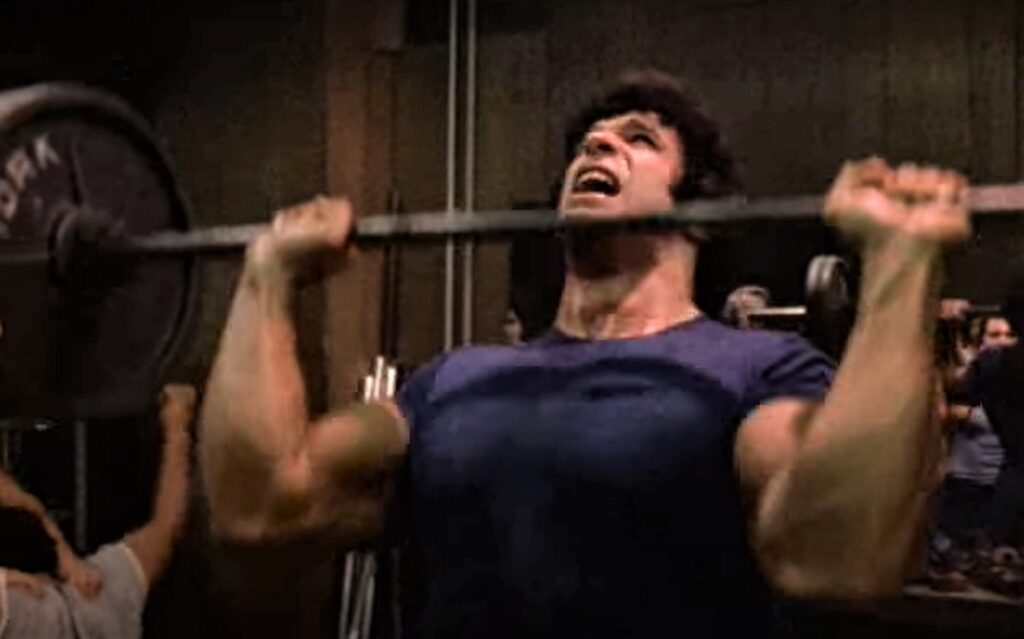
10. ARNOLD VISITS REG PARK
In an outtake, Schwarzenegger visits with his idol, the legendary bodybuilder and Hercules movie star Reg Park, who lived in South Africa.
11. EUGEN SANDOW
The pioneering bodybuilder who does a backflip before crossing his arms at the end of the opening credits is Eugen Sandow (he of Mr. Olympia trophy fame). This, some of the earliest moving picture footage ever shot, was filmed in 1894 by William K.L. Dickson in the New Jersey studio of Thomas Edison.
12. MIKE MENTZER CAMEO
Look closely just after Arnold greets orange-eating Big Tony (Tony Nowak) at the Gold’s Gym desk and as he’s telling Ken Waller he wants to join Gold’s so he can “start gaining some muscles.” Future bodybuilding legend Mike Mentzer (little known at the time of filming) is glimpsed at the far end of the counter.
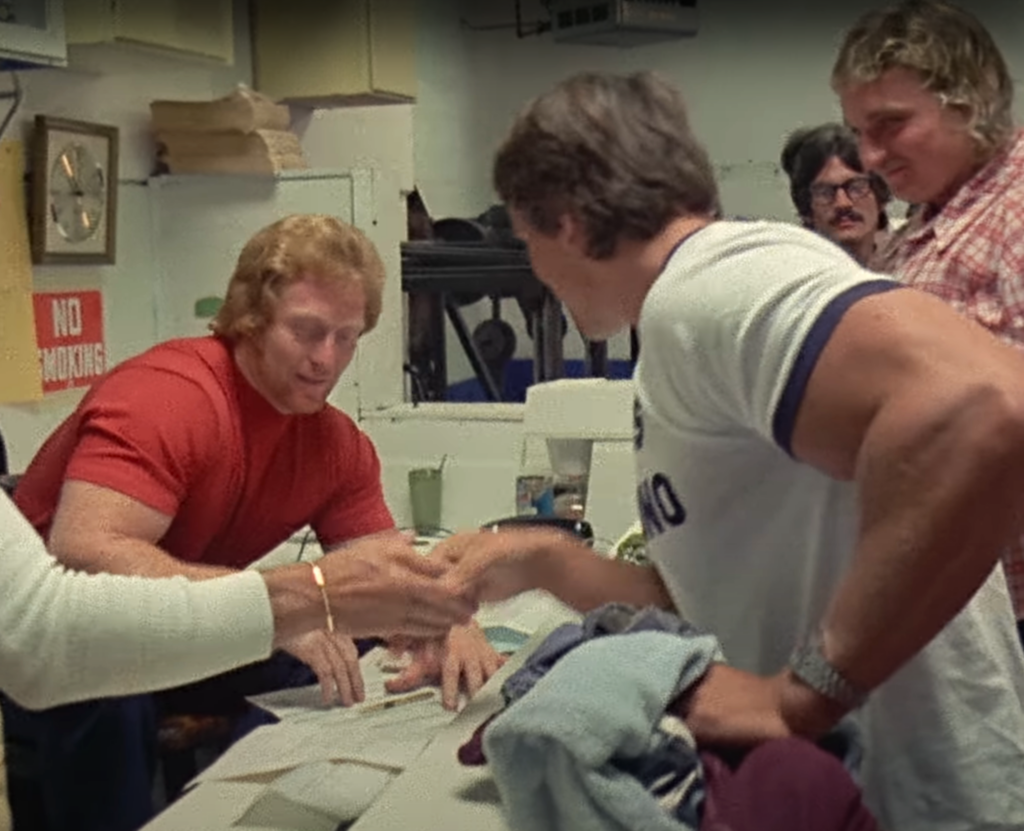
13. ANNIE LEIBOVITZ SHOOTING
The woman (seen only from behind) snapping pictures of Arnold in the first of the two photoshoots is Annie Leibovitz, arguably the world’s most famous photographer.
14. ARNOLD THE TERMINATOR
Arnold contends that, years before he played a terminator, he purposefully acted like a “machine with no emotions” in Pumping Iron as a marketing ploy for himself and the film.
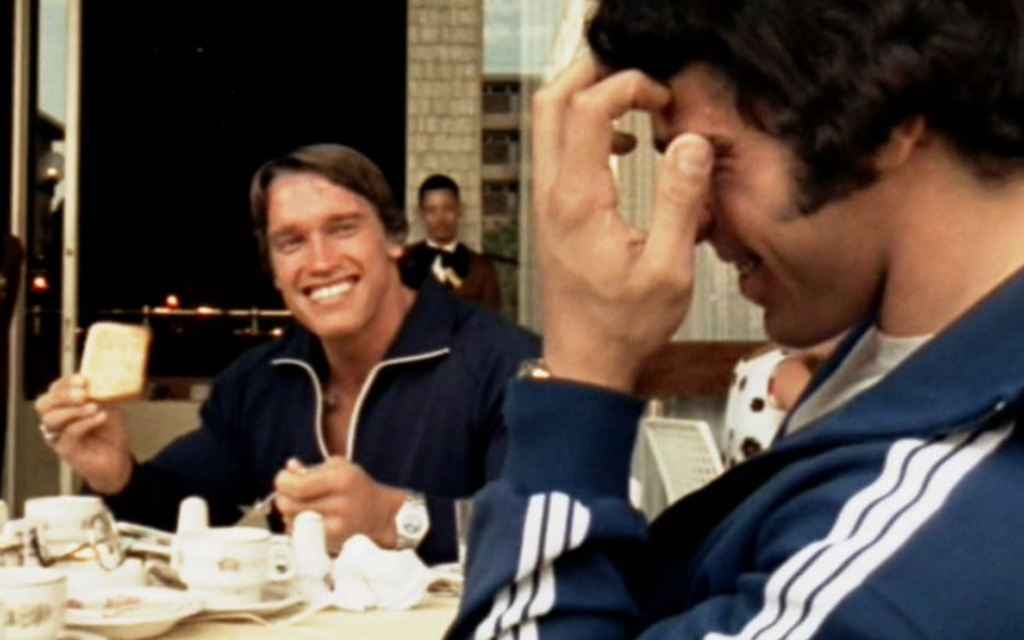
15. ARNOLD’S DAD’S FUNERAL
Similarly, Arnold’s story about missing his father’s funeral to prepare for a bodybuilding competition was spun by Arnold to make himself sound cold and calculated. In fact, his father passed away three months after the 1972 Mr. O, and Arnold saw him just before he died.
16. MIKE KATZ’S SHIRT
Mike Katz did lose his shirt temporarily and joked about Ken Waller taking it. The rest was fabricated. The scene where Waller, while tossing a football to Roger Callard and Robby Robinson, supposedly comes up with the idea was shot months after the contest. Waller’s villainous image persisted for years after Pumping Iron’s release. “I would go to contests and get booed after that,” he said later.
17. ARNOLD’S ADVICES
In Pumping Iron, Arnold says, “[Franco] comes to me for advices, so it’s not that hard for me to give him the wrong advices.” The mispronunciation “advices” became a catchword in the bodybuilding community. Even Arnold will now purposely say “advices” when he knows the audience will get the joke.
18. MR. OLYMPIA CLOSE-CALL
The documentary’s focus on Arnold, confident and seemingly unbeatable, has colored the impression of the 1975 Mr. Olympia, obscuring the fact that a slimmer-than-usual Schwarzenegger, winner of the heavyweight class, squeaked by Columbu at his best, winner of the lightweight class, for the overall win in a tight one-point judges’ decision: 4-3.
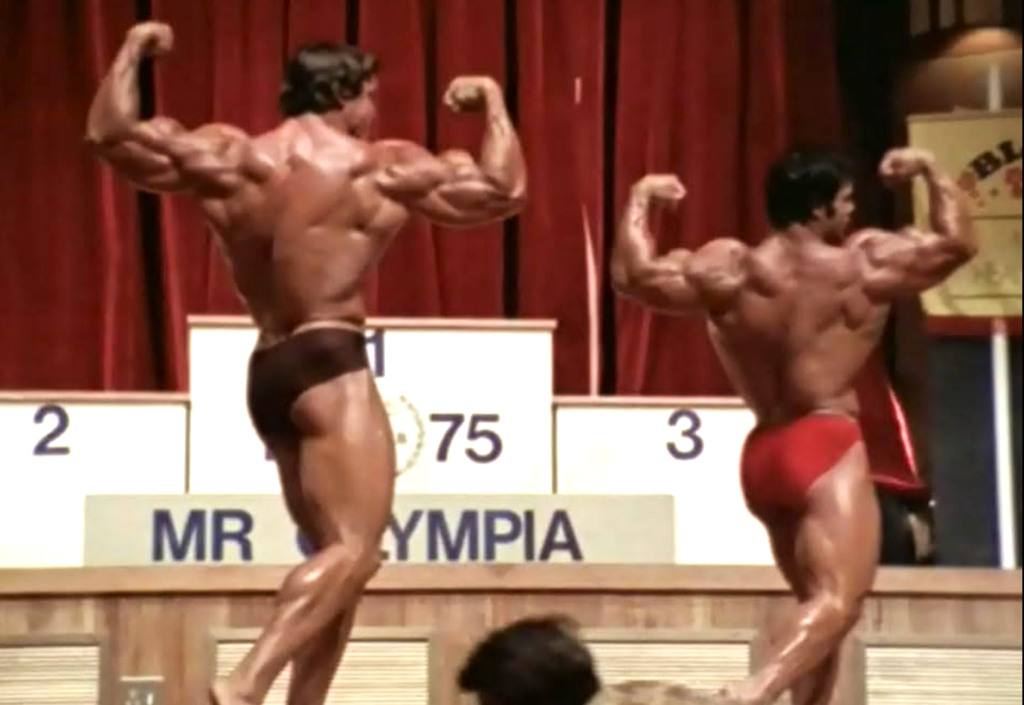
For much more on this contest, check out: The 1975 Mr. Olympia
19. MUSCULAR ART EXHIBIT
When the money ran out during editing, George Butler secured additional funds from a posing exhibition and discussion with “human sculptures” Arnold Schwarzenegger, Frank Zane, and Ed Corney, staged on February 25, 1976 at New York’s Whitney Museum. The unique event drew a sellout crowd that included top art critics.
20. STAR-STUDDED PREMIERE
Ballet dancer Mikhail Baryshnikov, musicians Paul Simon and James Taylor, and actresses Shelley Duvall and Gloria Swanson were among the famous who attended the Pumping Iron opening in New York City on January 17, 1977. Arnold wore a tux and brought his mother to the event. Earlier that week, Arnold was the guest of honor at a socialite affair hosted by former First Lady Jacqueline Kennedy Onassis.
21. TV SCREENINGS
After a successful theatrical run and very positive reviews, Pumping Iron screened on TVs on PBS in the fall of 1977. George Butler remembered: “Even that was exasperating because the distributor sold Pumping Iron to PBS for 30 grand, and about a week later ABC came to me and asked me if they could buy it, and I said, ‘Well, how much?’ and they said, “A million dollars.” And by that time, it was too late.”
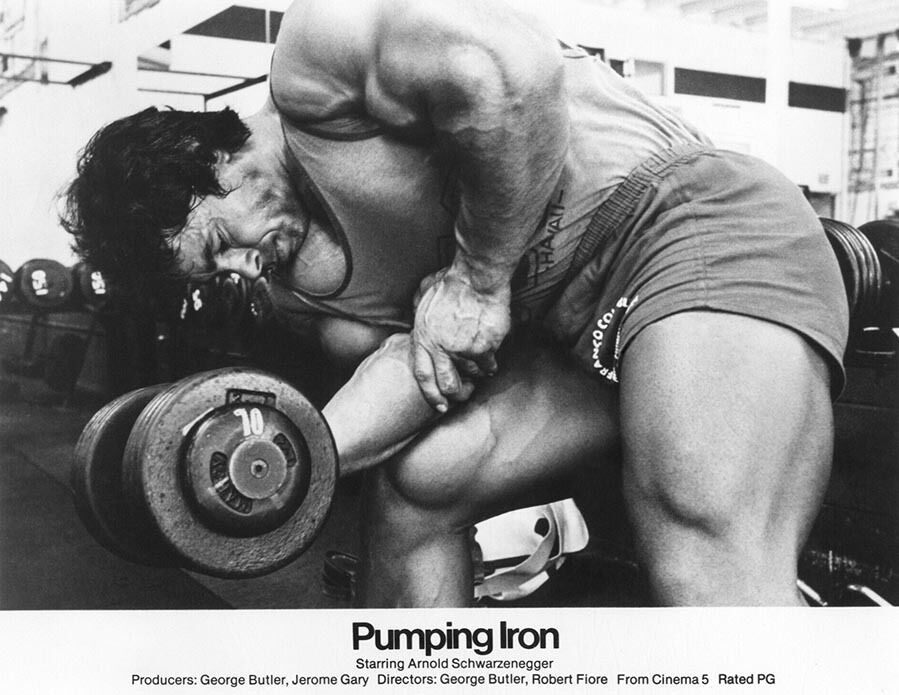
22. THE SEQUEL
Though other bodybuilding documentaries have claimed to be “the new Pumping Iron,” there was only one sequel: Pumping Iron II: The Women, which came out in 1985. As the title suggests, it focused on the young sport of female bodybuilding. Set around a women’s pro bodybuilding contest (not the Ms. Olympia) in 1983, it concentrates mostly on the feminine and popular Rachel McLish and the much more muscular upstart Bev Francis, who was transitioning to bodybuilding from powerlifting. The documentary, directed by George Butler alone, was criticized for too much staged content and has largely vanished from view. As of this writing, the DVD is out of print, and it’s not officially screening on any platforms.
23. ARNOLD BOUGHT PUMPING IRON
In 1991, Schwarzenegger bought Pumping Iron and all its outtakes from George Butler for $1.25 million.
24. PUMPING IRON COMES HOME
After being out of print on video for years, Pumping Iron was shown on the Cinemax TV channel in November 2002 with the inclusion of two new documentaries, Raw Iron: The Making of Pumping Iron, which includes many outtakes, and Iron and Beyond, which explores Schwarzenegger’s impact on fitness and movies. The Pumping Iron DVD was released in November 2003. The movie is currently streaming on various platforms.
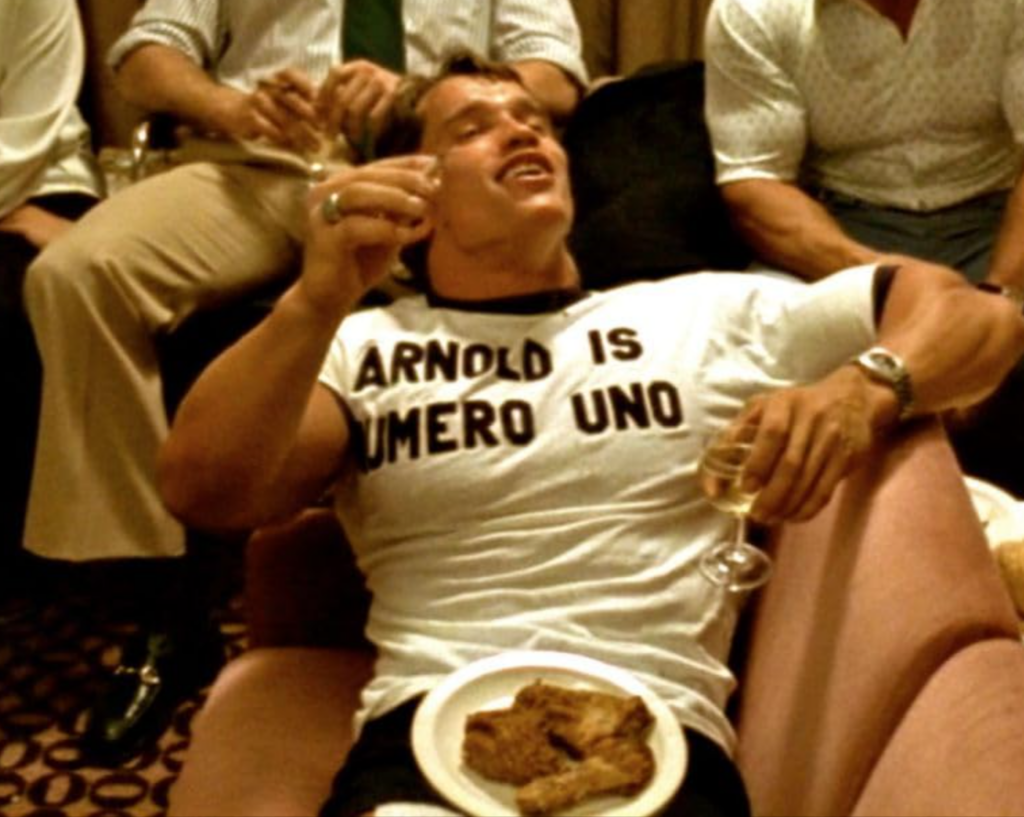
25. ENDURING PRAISE
In 2003, Sports Illustrated ranked Pumping Iron as the 21st best sports movie of all time and the sixth best sports documentary. In 2014, Bleacher Report ranked it as the 38th best sports movie and the fifth best sports documentary ever. And, in 2020, The Athletic ranked Pumping Iron as the 78th best sports movie and the seventh best sports documentary of all-time. Pumping Iron endures, continuing to inspire a new generation of iron-pumpers.



































